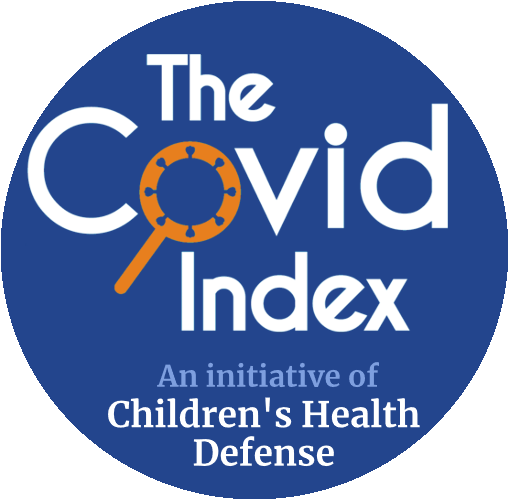"1.1. Background
... [T]his paper identifies potential mid-and long-term adverse vaccine effects that cannot be identified in short-term human clinical trials characteristic of vaccine efficacy testing. To ensure vaccine safety, long-term human testing under real-life conditions (exposures to multiple toxic stimuli) is required. There is an incompatibility between the accelerated vaccine development times being pursued by government and industry and the long times required for validation of vaccine safety.
In summary, it is difficult to see how safe COVID-19 vaccines can be developed and fully tested for safety on development time scales of one or two years, as proposed presently. The only real protection against a future COVID-19 pandemic or any other viral pandemic/outbreak is the one that was demonstrated to work in the SARS, MERS, and COVID-19 pandemics/outbreaks, and in the annual influenza pandemics/outbreaks: a healthy immune system capable of neutralizing incoming viruses as nature intended...
2. Methodology
A hybrid methodology was used to identify references showing potential long-term adverse effects of vaccines and vaccine/infection-induced mechanisms that could contribute to these adverse effects. Based on reading myriad vaccine adverse effects review articles, terms showing mechanisms were extracted (e.g., antibody-dependent enhancement, viral interference, route of infection, original antigenic sin, etc), and used as a Medline query to retrieve potentially relevant articles. All these retrieved articles were read, and the most relevant ones extracted...
3.4. Vaccine mechanisms with uncertain consequences
Numerous mid- and longer-term potential issues concerning vaccines have been identified. Their themes are summarized initially, followed by excerpts from specific cited references...
3.7. Diseases triggered by vaccines
... The two main categories of diseases reported in the biomedical literature triggered by vaccinations are Autoimmune (e.g., Systemic Lupus Erythematosus, Psoriasis, Arthritis, Multiple Sclerosis, Hepatitis, Uveitis, Pseudolymphoma, Guillain-Barre Syndrome, Thrombocytopenic Purpura, etc.) and Neurological (e.g., Central Demyelinating Diseases, Developmental Disability, Febrile seizures, Narcolepsy, Encephalomyelitis, Autonomic Dysfunction, etc.). Others include Diabetes, Gastrointestinal, Joint-related, Necrobiotic Granuloma, Neutropenia, Pulmonary Fibrosis, etc.
Main syndromes associated with systemic toxicity of adjuvanted vaccine: acute phase response (APR), hypersensitivity reactions, induction or worsening of autoimmune diseases, modification of drug hepatic metabolism, vascular leak syndrome (VLS), oral immunosuppression or tolerance post vaccination.
Vaccinations may also contribute to the mosaic of autoimmunity...
4. Conclusions
... Vaccines are being promoted by the healthcare industry, politicians, decision-makers, and the mainstream media as the best hope for containing the COVID-19 pandemic, and this is reflected in the funding their accelerated development is receiving (Moderna, a leading COVID-19 vaccine contender, has 'scored $2.48 billion in R&D and supply funding from the U.S. government for its program'. The goal appears to be initial vaccine distribution by around end of 2020, although it is questionable whether such an accelerated vaccine development program would include adequate mid-term and long-term safety testing.
This optimistic outlook for early vaccine dissemination to the public contradicts vaccine development history, especially for coronavirus vaccines. Vaccine development, including limited safety testing, has taken an average of 12–15 years. Vaccines for the coronaviruses most closely associated with the SARS pandemic/outbreak of 2002 and the MERS pandemic/outbreak of 2012 have yet to be developed successfully, even after one-two decades of research.
The present study examined many viral mechanisms that could lead to vaccines exacerbating rather than attenuating viral infection... Generically, the main problem is that prior viral exposure (vaccine-induced or wild/natural) could impact future viral exposure (vaccine-induced or wild/natural) positively or negatively. Years could be required to determine which outcome would result, both in the short-term and in the long-term. Additionally, many chronic diseases have been shown to result from viral exposure, and years of tracking in human trials could be required to determine which, if any, of these diseases would result from a COVID-19 vaccine. Possibly safer (non-autoimmunity-inducing) vaccines could result using peptide sequences derived from pathogens and absent in the human proteome, although the degree of safety enhancement might require years of tracking to determine."
© 2020 The Author(s). Published by Elsevier B.V.
This article is available under the Creative Commons CC-BY-NC-ND license and permits non-commercial use of the work as published, without adaptation or alteration provided the work is fully attributed.
